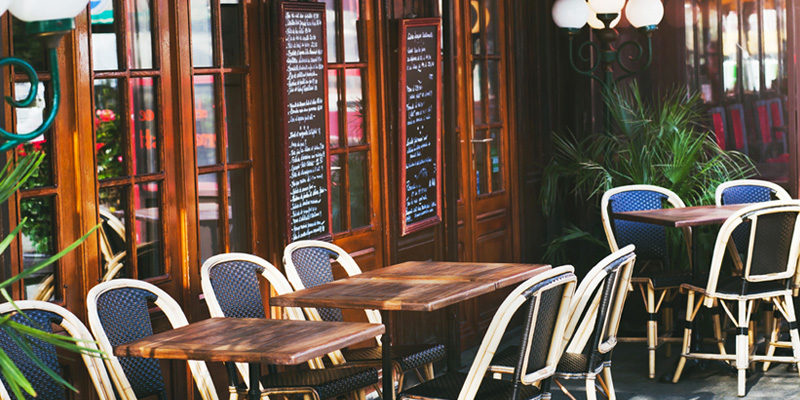No matter where you were born, what nationality you are, or where you currently live, we all share one thing in common — at the end of the work day we all need a drink. There’s nothing quite as blissful as that first sip of end-of-the-day alcohol, whatever your poison may be. Where Americans have loud and lively happy hour, the French have a more refined l’heure de l’apéro. Here we break down the durational, gastronomical, and cultural differences between these spirituous evening pleasures.
Time & Place
Both boozy breaks find themselves in that sweet spot of the evening, just after the workday’s completion, though still before dinnertime. Happy hours are generally always at a bar, whereas apéro can be taken at a bar or café (usually on a covered sidewalk terrace) or hosted at someone’s home. The time for happy hour is somewhere between the 5 and 7, finishing when apéro tends to just be starting, which leads to our next difference between the two: cultural.
Cultural Differences
The timing of the post-work ritual is the first reflection of the cultural difference between the two booze breaks. As many Americans know all too well, many of us work past 7. Stay in the office past 7? Too bad. Happy hour goes on regardless. Still want that beer? Be prepared to pay full price for it. In fact, many bars design their happy hours at earlier time periods for the sake of profiting from the fact that Americans work past the money-saving time slot offered. Where happy hour can come and go in a flash, unseen by many, apéro is not an option. Apéro is a staple in the daily repertoire of the French, highlighting their values on food and wine culture, friends, family, and relaxation. Apéro – 1, Happy Hour – 0.
Gastronomical Differences
Most importantly, what are we serving? As Americans, we know how happy hour goes; Bud or Coors, house wine, and mixed drinks crafted with crappy well liquor. In France, apéro at a bar will generally consist of various discounted beer and cocktail options. Traditional apéro drinks also vary by region in France; in the Languedoc it’s not uncommon to be served a sweet wine made of Muscat to stimulate the palate. In Provence, pastis, an anise-flavored liqueur, is always a staple. Elsewhere, vermouth, Lillet, and the bitter Suze are common apéritif options. Apéro doesn’t just encompass drinks, though; snacks are equally emphasized. At bars and cafés, be prepared for some crunchy chips or salty peanuts sent your way to soak up those suds. When taken in someone’s home, apéro can include a variety of pickings, such as crackers and baguettes, cheeses and tapenades, or nuts and pretzels. The best part of an at-home apéro is that everybody brings a little something to contribute, turning an after-work drink into a pre-dinner delight. To that, we say “Santé!”

